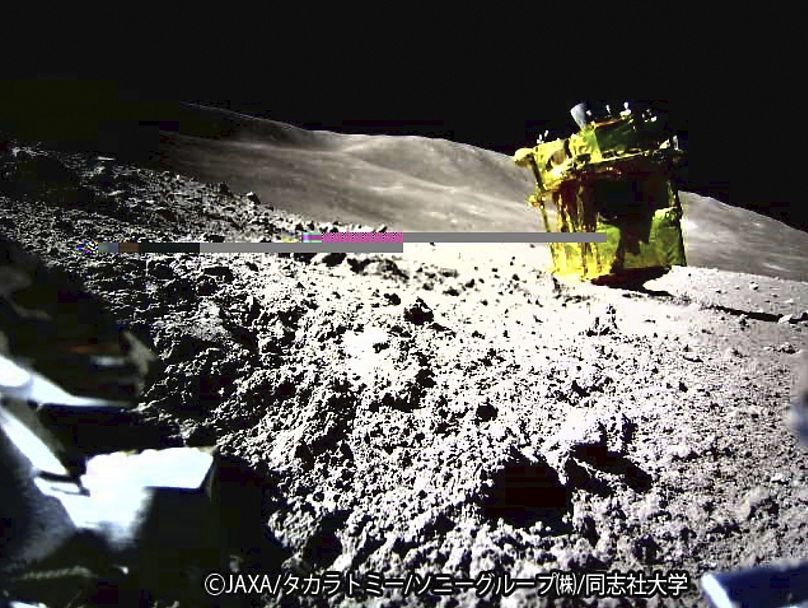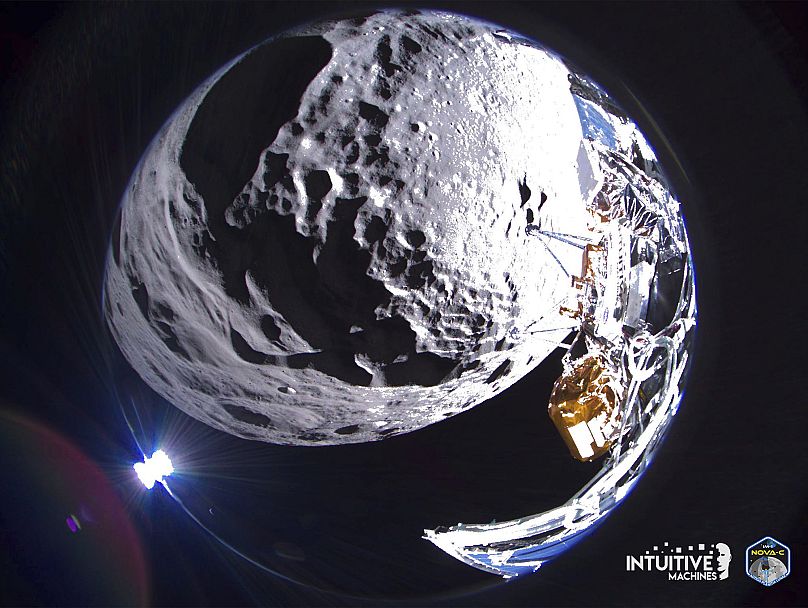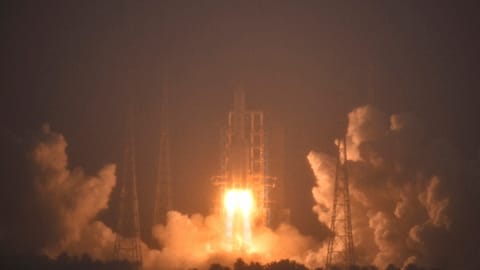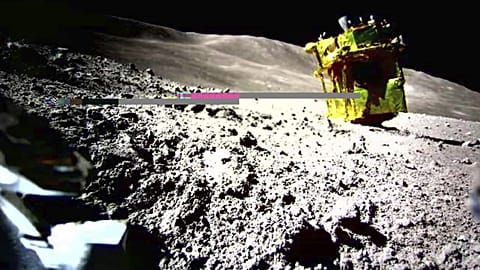Only a handful of robot space missions have landed successfully on the Moon. Experts say a range of variables determines a lander’s success or fiery failure.
For the first time in half a century, the US finally stuck the landing - a Moon landing, that is.
The SpaceX rocket carrying private company Intuitive Machines’ lunar lander, blasted off from the Kennedy Space Center in Florida and journeyed 400,000 km to reach its destination - the southern hemisphere of the moon.
On board the lunar lander: NASA space equipment that will prepare the Moon for further human exploration.
Bill Nelson, the US space agency’s administrator, called the launch "a new adventure in science and American leadership in space".
"This feat is a giant leap forward for the whole of humanity," Nelson said in a televised statement on X.
The landing by Houston-based Intuitive Machines is the only one by Americans in recent memory that’s been successful.
Robot-led missions such as India’s Chandrayaan-3 and Japan’s SLIM have both made it to the Moon’s southern pole in recent months.
Two more rockets from the Russians and another bid by the Japanese both failed to land in the last year.
In January, US company Astrobotic Technology tried to make history as well, but eventually, they had to wave off a landing attempt because of a critical fuel leak, later burning up in the Earth’s atmosphere.
If mankind managed to get humans there safely over 50 years ago, why is it still so hard to land unmanned landers on the Moon?
Having a gentle touch(down)
Markus Landgraf, leader of the Moon Future Studies programme with the European Space Agency (ESA), said it comes down to a light touch.
Rockets leave Earth and travel towards the Moon at a speed of 2 km/second - a speed they maintain once they reach orbit.
There are guidance systems on the aircraft that determine the distance between the spacecraft and the surface of the Moon so that the team on Earth can start the eventual descent.
This is important, Landgraf notes, because once you start "burning" the engine of the spacecraft, it means that, for robot-only missions, you’re "committed to land".
"The question then becomes … how hard are you going to land?" Landgraf said. "And in order to land softly, how are you going to reduce [that speed?]"
To land softly, Landgraf said the spacecraft’s engine has to be running continuously for about 10 minutes to "remove all the velocity that you had to have to stay in orbit".
Then, it becomes a matter of slowing down to a speed of about 6,479 km/h (1,800 m per second) so the craft can gently touch down on the Moon's surface.
Landgraf said everything has to work "just right" for the spacecraft to avoid a fiery demise.
"It’s not a magical technology, so it’s not unachievable… you cannot just invent new things and try your best," he said.
Location, location, location
However, experts told CNN that there have only been five countries that have successfully stuck a soft landing with a robotics-only mission: the former Soviet Union’s Luna 9 landing, the United States’ Surveyor 1 mission in 1966, and, more recently in the 21st century, China, India, and Japan.
Landgraf said that it becomes slightly easier for human missions to stick the landings because there's a "certain element of problem-solving" that astronauts can do from the spacecraft that cannot be done remotely from Earth.
And in worse case scenarios, Landgraf said that astronauts can separate themselves from a spacecraft in orbit and return to Earth if they think that the landing is unlikely to end well: something that cannot be done with robot-only missions.
The obstacles for a Moon landing don’t stop at the craft's speed. Once a spacecraft approaches the Earth’s satellite, there's then incredibly rough terrain awaiting it.
Landgraf said that, in the past, most lunar missions were limited to the "equatorial" zone of the Moon, because the terrain there is largely flat and easy to land on.
One part of the Intuitive Machine’s landing that makes it even more impressive, Landgraf continued, is that they landed on the southern sphere of the Moon - an unexplored, darker, and rougher surface than those missions of past.
"Illumination [on the south pole] is very difficult with all these long and deep shadows, which makes it even more difficult for the computer to look at the picture [of the land] and make a decision [about how to land]," Landgraf said.
Dust can be disorientating
Nicolas Peter, President of the International Space University (ISU) in France, said another thing that teams need to be aware of when landing a spacecraft on the Moon is space dust.
“Sometimes when in fact you land… the dust moving from the terrain can blind you, can impact the satellite so it makes it difficult,” he said.
Both men agreed that while the feat of Intuitive Machines is remarkable because of its technological feats, there was a bit of luck on their side that pushed their mission forward.
"Sometimes, there’s just a combination of factors that make a mission fail and there’s nothing you can do about it," Landgraf said.
Despite beating the odds, there are still challenges ahead for team Intuitive Machines.
The ground crew on Earth has to make sure that the rover can survive a 14-day-long, dark, cold night on the surface of the Moon to be able to gather the scientific information that they need.
The latest update from Intuitive Machines on X says that their rover, Odysseus, is "alive and well".
Their teams are in contact with the machine to figure out its specific location on the Moon and "to download science data" that it has already collected from the lunar surface.




















